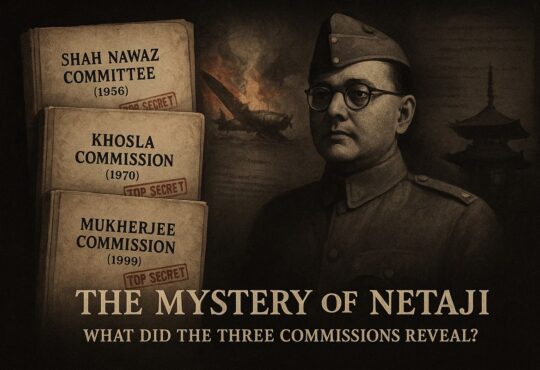
A Journey from Pakistan to Bangladesh: A Simplified Timeline
The 20th century was a time of significant change in South Asia. This timeline explains the key events that led to the creation of Pakistan in 1947 and the birth of Bangladesh in 1971. Each section breaks down essential moments in this historical journey.
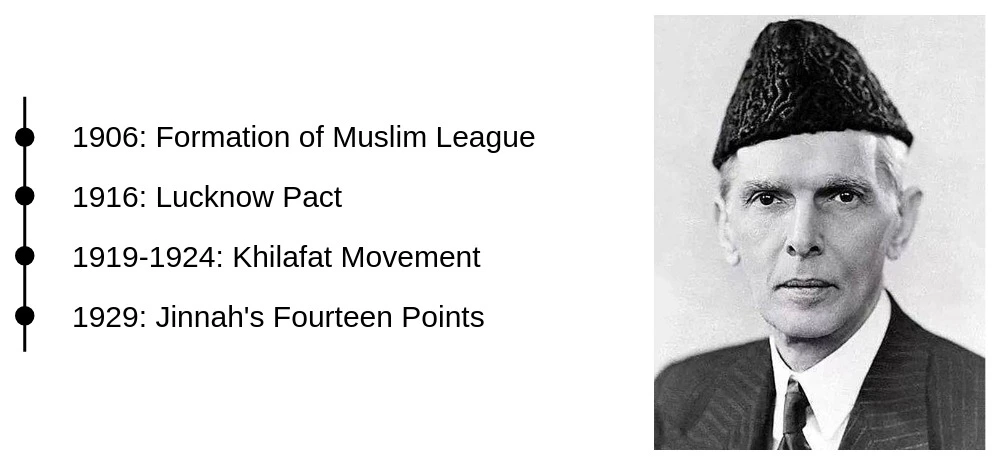
Early Calls for Muslim Rights (1906-1929)
Formation of the All India Muslim League (1906): In 1906, the All India Muslim League was formed in Dhaka (now Bangladesh). Its purpose was to protect the political rights of Muslims in British India, as they felt underrepresented.1
Lucknow Pact (1916): In 1916, the Muslim League and the Indian National Congress agreed to the Lucknow Pact, which accepted separate voting for Muslims. This was important because it acknowledged the distinct identity of Muslims in India.2
The Khilafat Movement (1919-1924): Indian Muslims launched the Khilafat Movement to protest the British dismantling of the Ottoman Empire after World War I. Although the movement failed, it united Muslims and strengthened their identity.3
Jinnah’s Fourteen Points (1929): Muhammad Ali Jinnah, a critical Muslim leader, proposed the Fourteen Points in 1929. These points demanded more political rights for Muslims in India, marking a growing push for Muslim autonomy.4
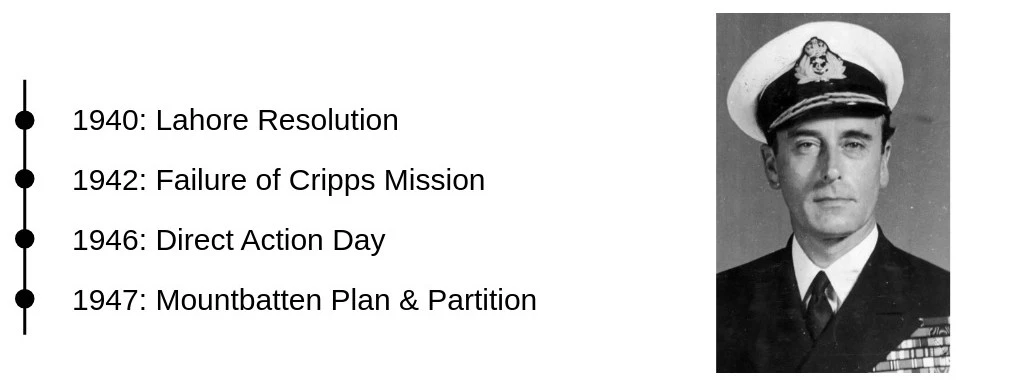
The Path to Pakistan (1940-1947)
Lahore Resolution (1940): In 1940, the All India Muslim League, led by Jinnah, passed the Lahore Resolution. It called for “independent states” for Muslims in India, which became the foundation for Pakistan.5
Failure of the Cripps Mission (1942): During World War II, the British offered India post-war dominion status through the Cripps Mission, but both the Congress and Muslim League rejected it, as it didn’t meet their goals.6
Direct Action Day (1946): On August 16, 1946, the Muslim League launched “Direct Action Day” to demand the creation of Pakistan. This led to severe communal violence, especially in Calcutta, heightening tensions between Hindus and Muslims. It is also referred to as the Great Calcutta Killings.7
Mountbatten Plan and Partition (1947): The British Viceroy, Lord Mountbatten, proposed dividing British India into two nations—India and Pakistan. This plan was accepted, and on August 14, 1947, Pakistan was created as a country for Muslims, while India became a separate nation for Hindus.8
ALSO READ:
- The Decline of Hindu Self-Defense: Historical Roots and Modern Challenges
- Constitutional Discrimination against Hinduism
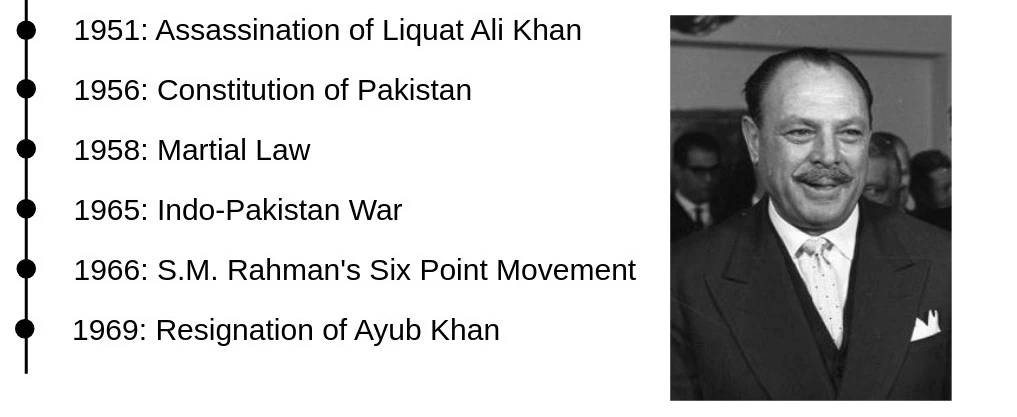
Challenges in the Newly Formed Pakistan (1947-1971)
Assassination of Liaquat Ali Khan (1951): Pakistan’s first Prime Minister, Liaquat Ali Khan, served from 1947 until his assassination in 1951. This created political instability, making it challenging to manage the young country.9
Constitution of 1956 and Martial Law (1958): Pakistan became an Islamic republic in 1956.10 However, instability continued. In 1958, President Iskander Mirza declared martial law and appointed General Ayub Khan as the Commander-in-Chief of the Pakistani army and the Chief Martial Law Administrator.11
Ayub Khan’s Rule and the 1965 Indo-Pakistani War: In 1962, Ayub Khan introduced a new constitution, but it gave more power to the central government, upsetting people in East Pakistan.12 In 1965, Pakistan and India fought a brief war over Kashmir, which ended in a ceasefire but left the two sides still in conflict.13
Discontent in East Pakistan and Sheikh Mujibur Rahman’s Six-Point Movement (1966): In 1966, East Pakistan, led by Sheikh Mujibur Rahman, demanded more political and economic rights with the Six-Point Movement. The central government in West Pakistan rejected these demands, deepening the divide between East and West Pakistan.14
Resignation of Ayub Khan (1969): In 1969, Ayub Khan’s government faced widespread protests, forcing him to resign. General Yahya Khan took over and promised elections, but tensions between East and West Pakistan worsened.15
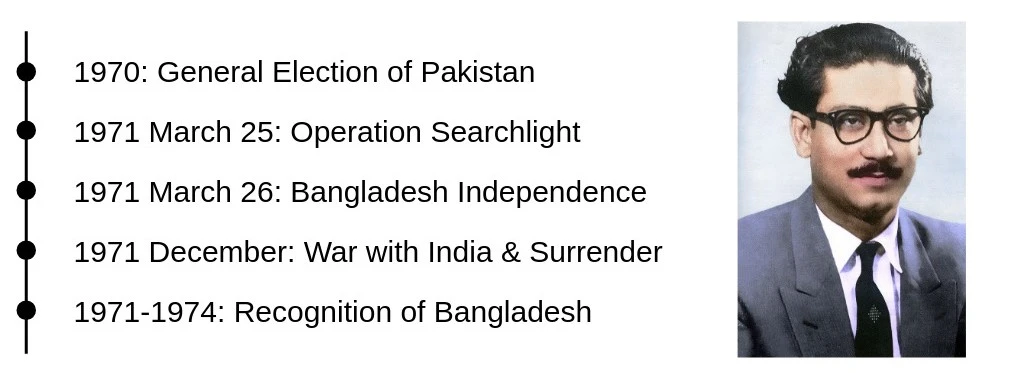
The Birth of Bangladesh (1970-1971)
General Elections of 1970: In December 1970, Pakistan held its first general elections. Sheikh Mujibur Rahman’s Awami League won most seats, especially in East Pakistan.16 However, the West Pakistani government refused to transfer power, leading to a political crisis.
Operation Searchlight (1971): On March 25, 1971, the Pakistani military launched “Operation Searchlight” to crush the independence movement in East Pakistan. This led to widespread violence and atrocities.1718
Declaration of Independence (March 26, 1971): The next day, on March 26, 1971, East Pakistan declared its independence, calling the new country “Bangladesh.”19 This sparked a war between the Pakistani military and the Mukti Bahini (Bangladeshi liberation forces).
India’s Involvement and the War (December 1971): India joined the conflict in December 1971, supporting the people of East Pakistan. The war ended quickly, with India and the Mukti Bahini defeating the Pakistani forces.20
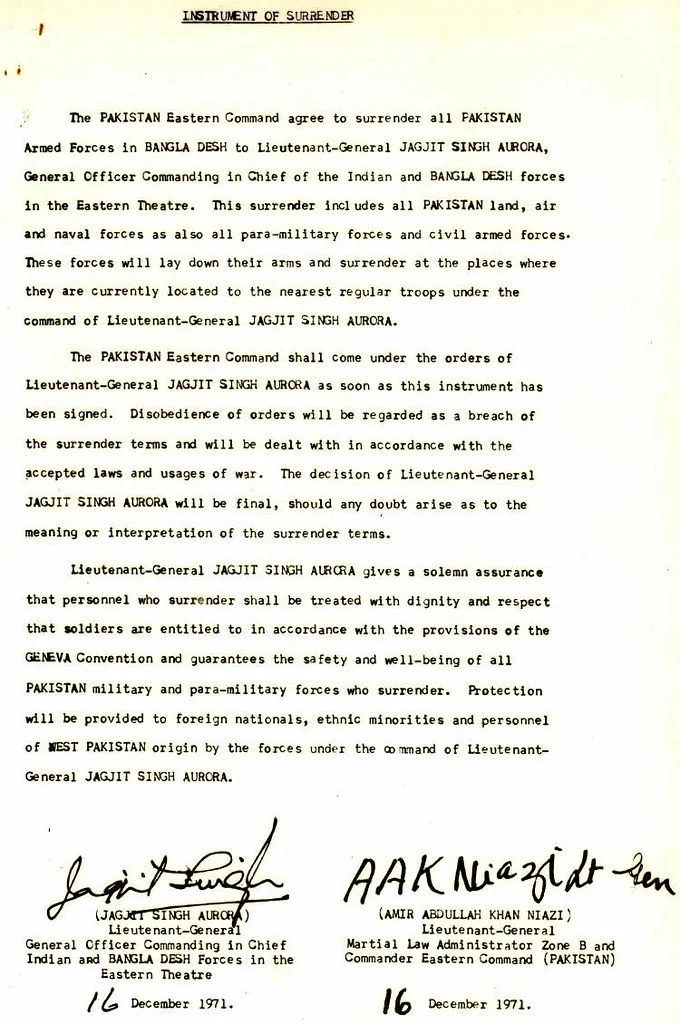
Surrender of Pakistani Forces (December 16, 1971): On December 16, 1971, the Pakistani military in East Pakistan surrendered. This marked the end of the war and the official birth of Bangladesh.20
Recognition of Bangladesh (1971-1974): Bangladesh gained recognition from several countries after the war, including India. Pakistan recognized Bangladesh in 1974, completing the country’s path to independence.21
Conclusion
The Lasting Impact on the Indian Subcontinent The creation of Pakistan in 1947 and the eventual birth of Bangladesh in 1971 were pivotal moments in the history of the Indian subcontinent. These events were not merely about the drawing of new borders; they represented the deep-rooted aspirations, struggles, and tensions among diverse communities in the region. The journey from the founding of the All India Muslim League in 1906 to the violent partition of British India in 1947, and later the separation of East Pakistan in 1971, highlights the complexity of nation-building in a region marked by religious, cultural, and political diversity.
The formation of Pakistan was fueled by the desire of Muslims in British India to secure their political rights and ensure their cultural and religious identity in an independent state. While Pakistan emerged as a Muslim-majority state, it was divided geographically between East and West Pakistan, leading to inherent challenges. The centralization of power in West Pakistan and the neglect of East Pakistan sowed the seeds of discontent, culminating in the demand for greater autonomy, which was eventually denied.
The emergence of Bangladesh in 1971 marked another turning point, demonstrating the failure of the two-nation theory that had originally justified the creation of Pakistan. The inability of West Pakistan’s leadership to acknowledge the political, economic, and cultural demands of East Pakistan led to one of the bloodiest chapters in the subcontinent’s history. The brutality of “Operation Searchlight” and the widespread atrocities committed by the Pakistani military. With India’s decisive intervention in the conflict, the Bangladesh Liberation War ended with creating a new nation, affirming the people’s right to self-determination.
The long-term impact of these events on the Indian subcontinent is profound. Pakistan, born out of the desire to be a homeland for Muslims, has struggled with political instability and identity crises ever since. The loss of East Pakistan was a national trauma, and Pakistan’s internal dynamics were forever changed. Meanwhile, despite facing the human costs of partition, India emerged as a secular democracy, grappling with its own challenges of unity in diversity. The creation of Bangladesh, on the other hand, ushered in a new era for the people of East Pakistan, who could reclaim their language, culture, and political autonomy.
